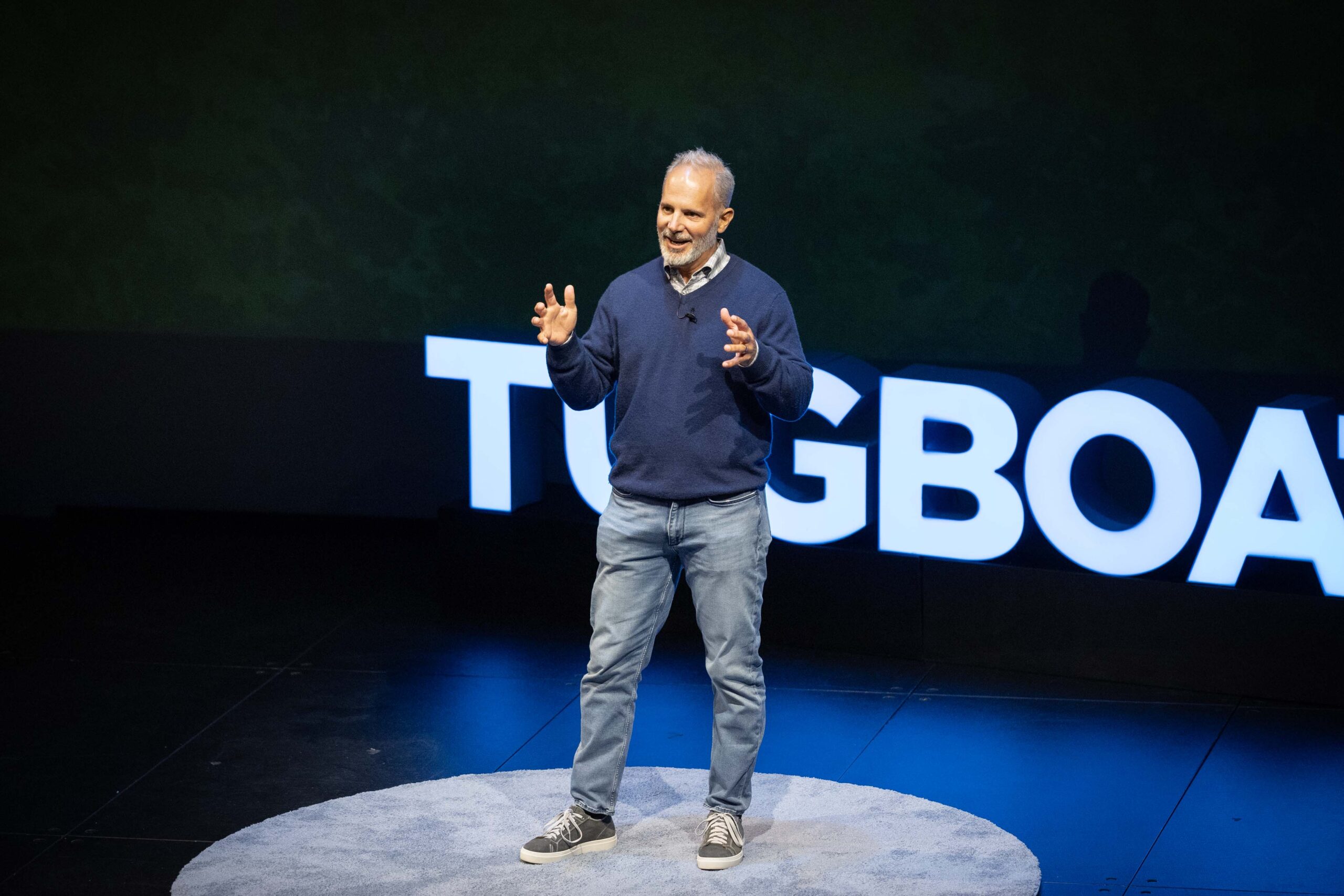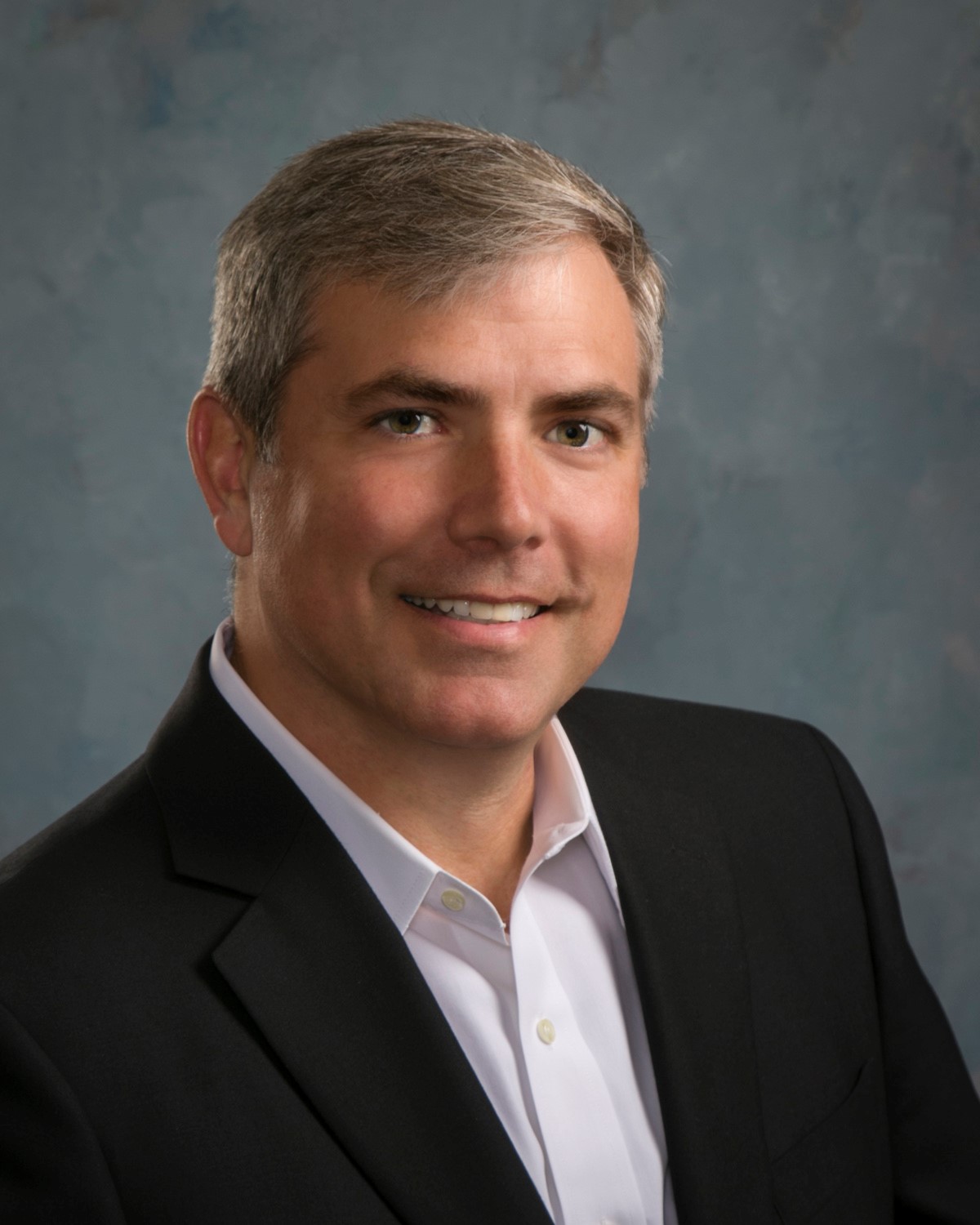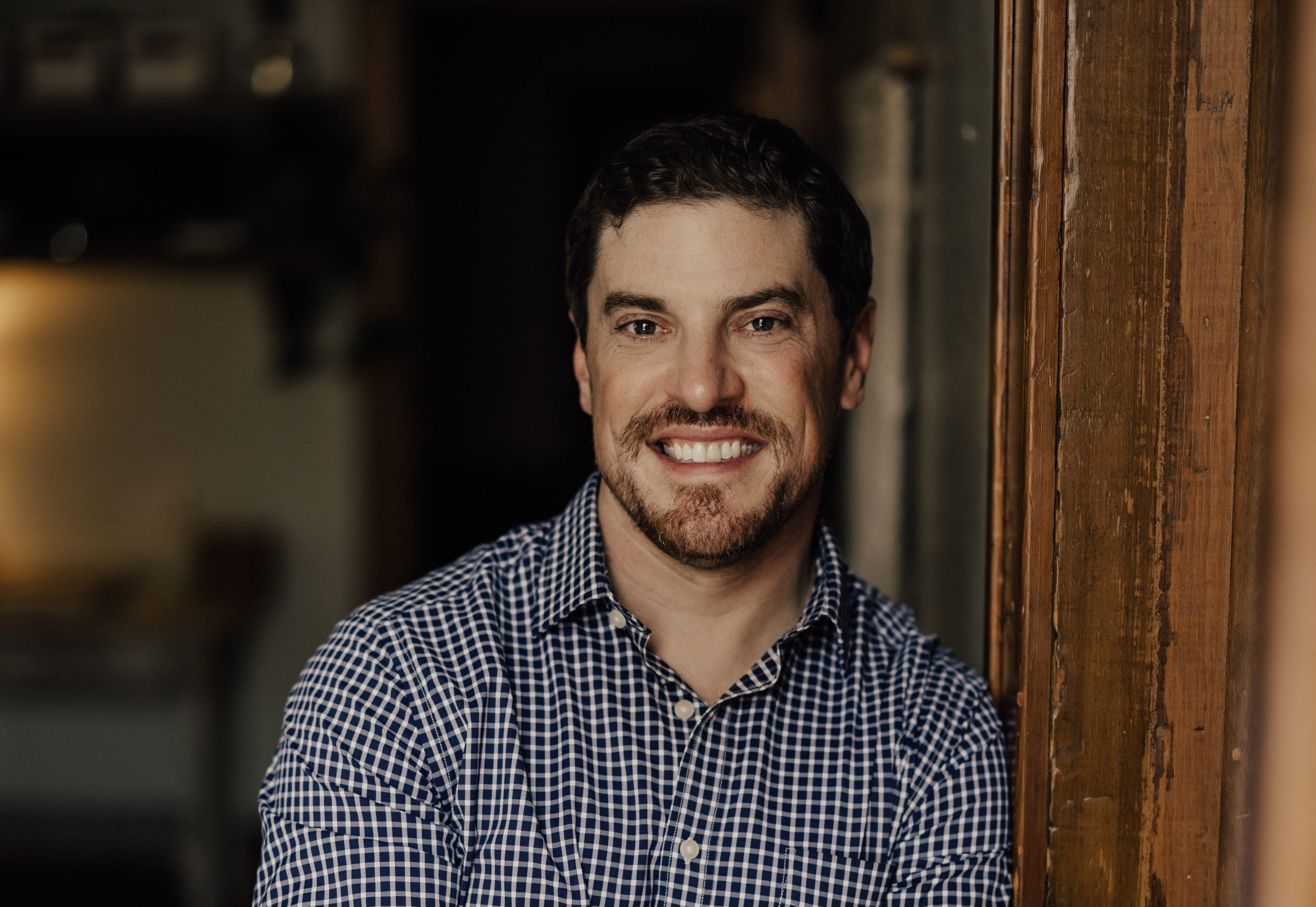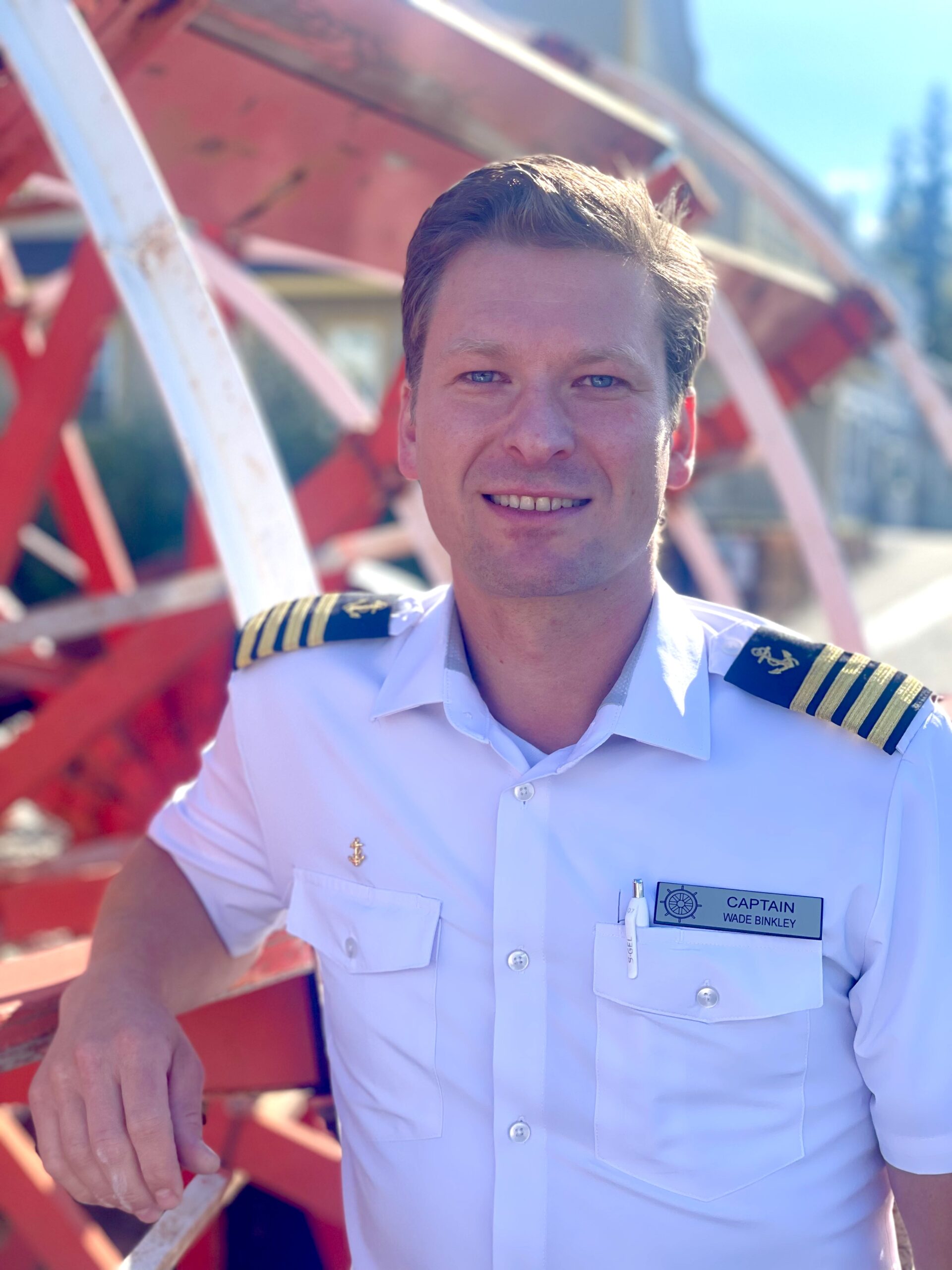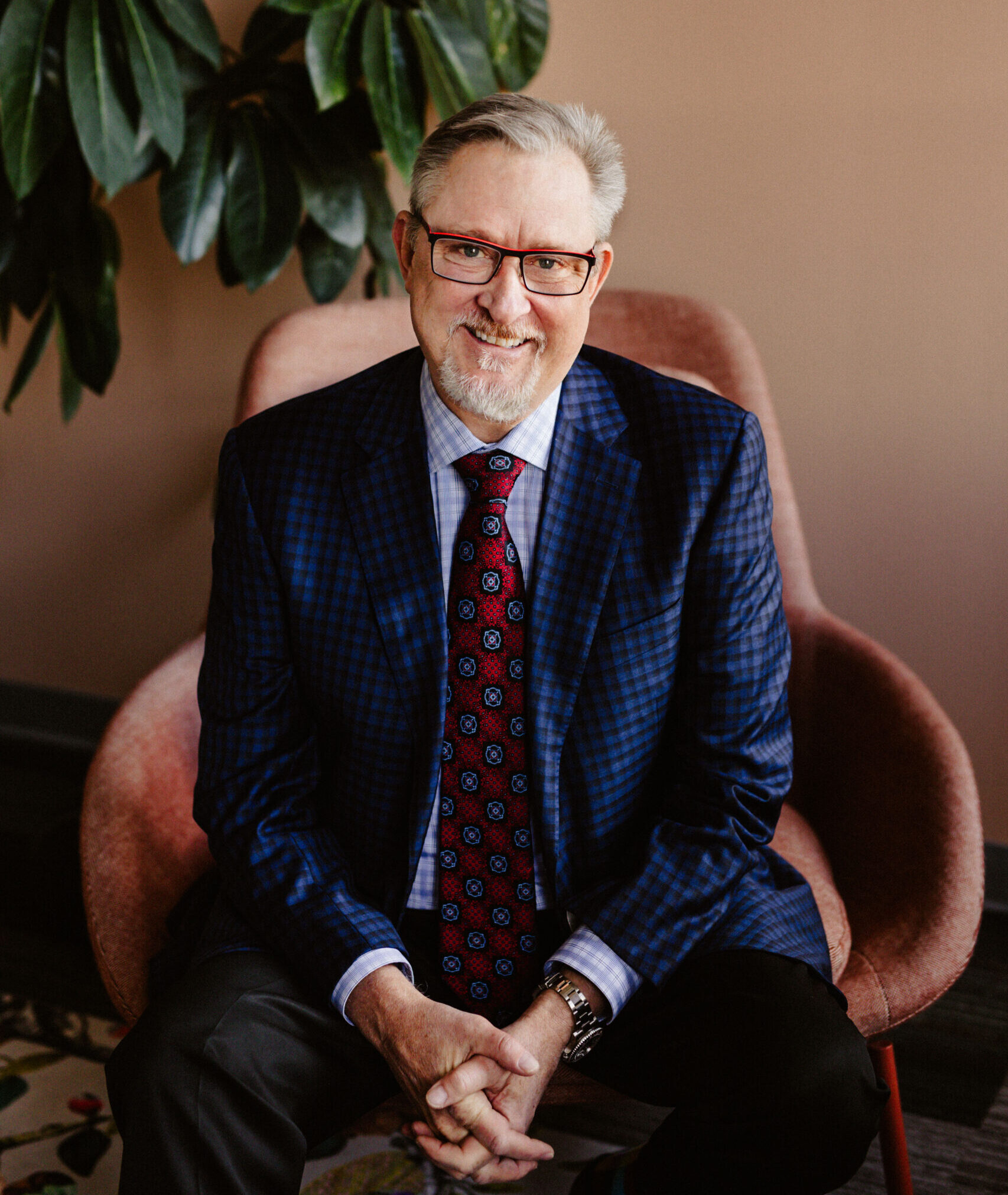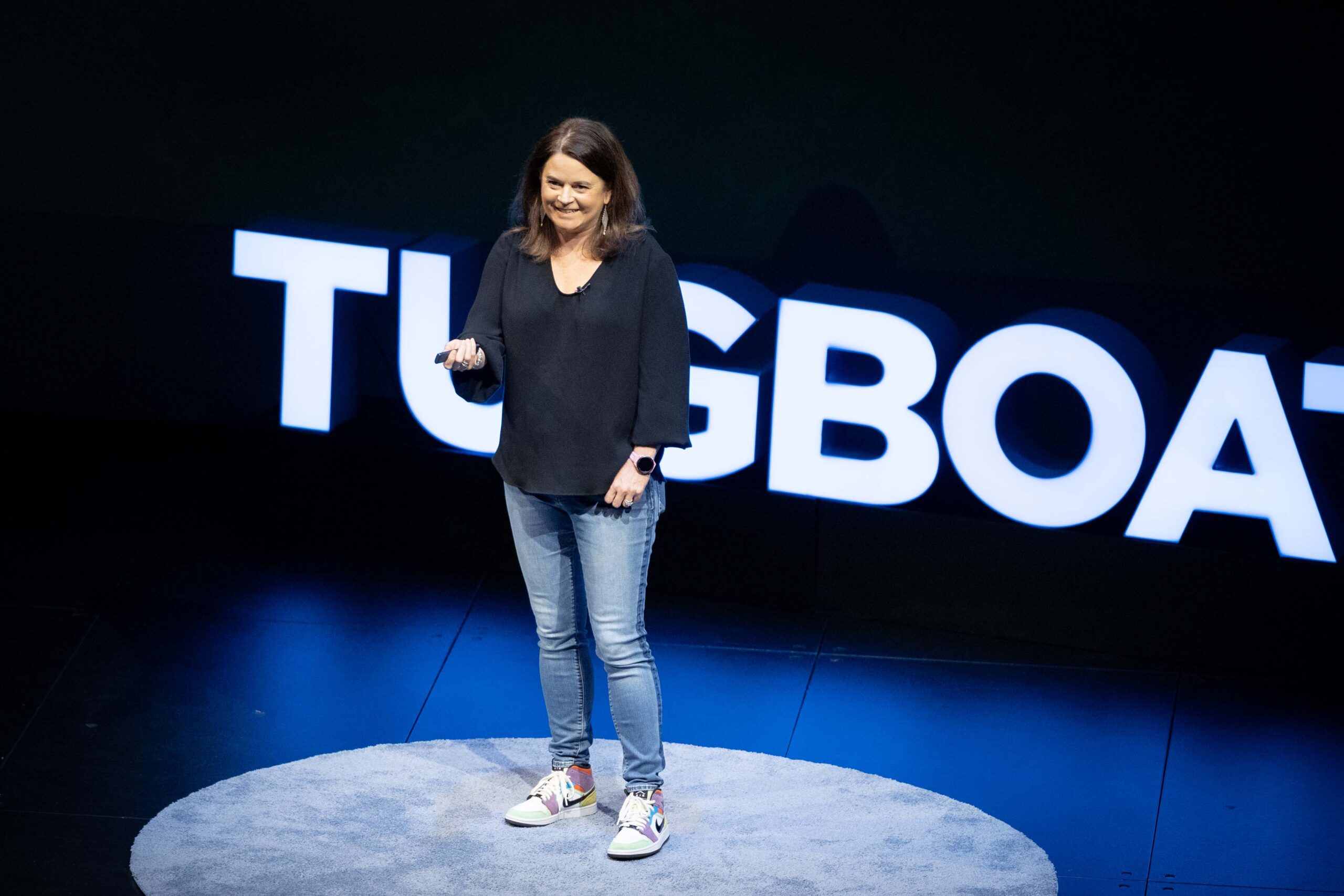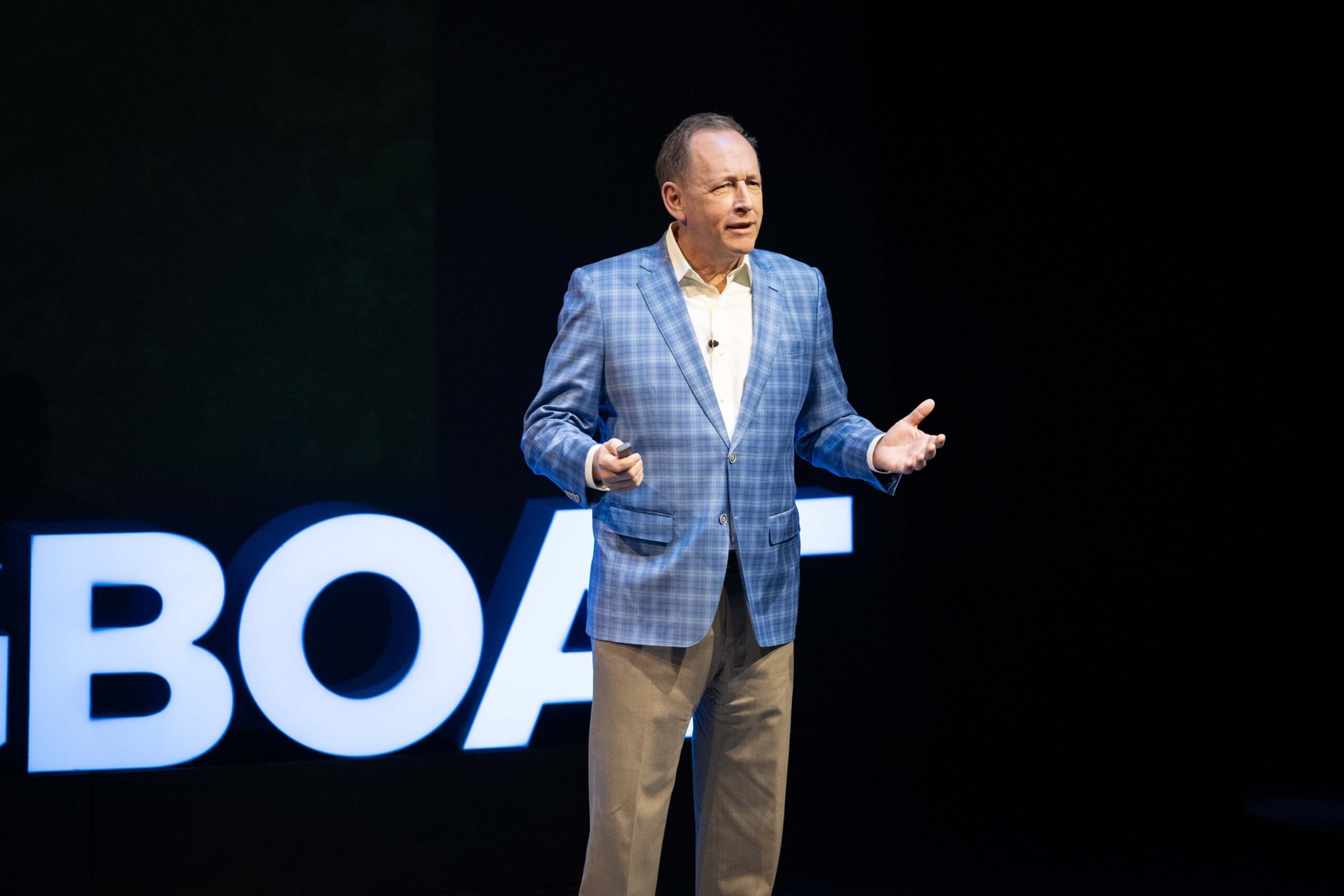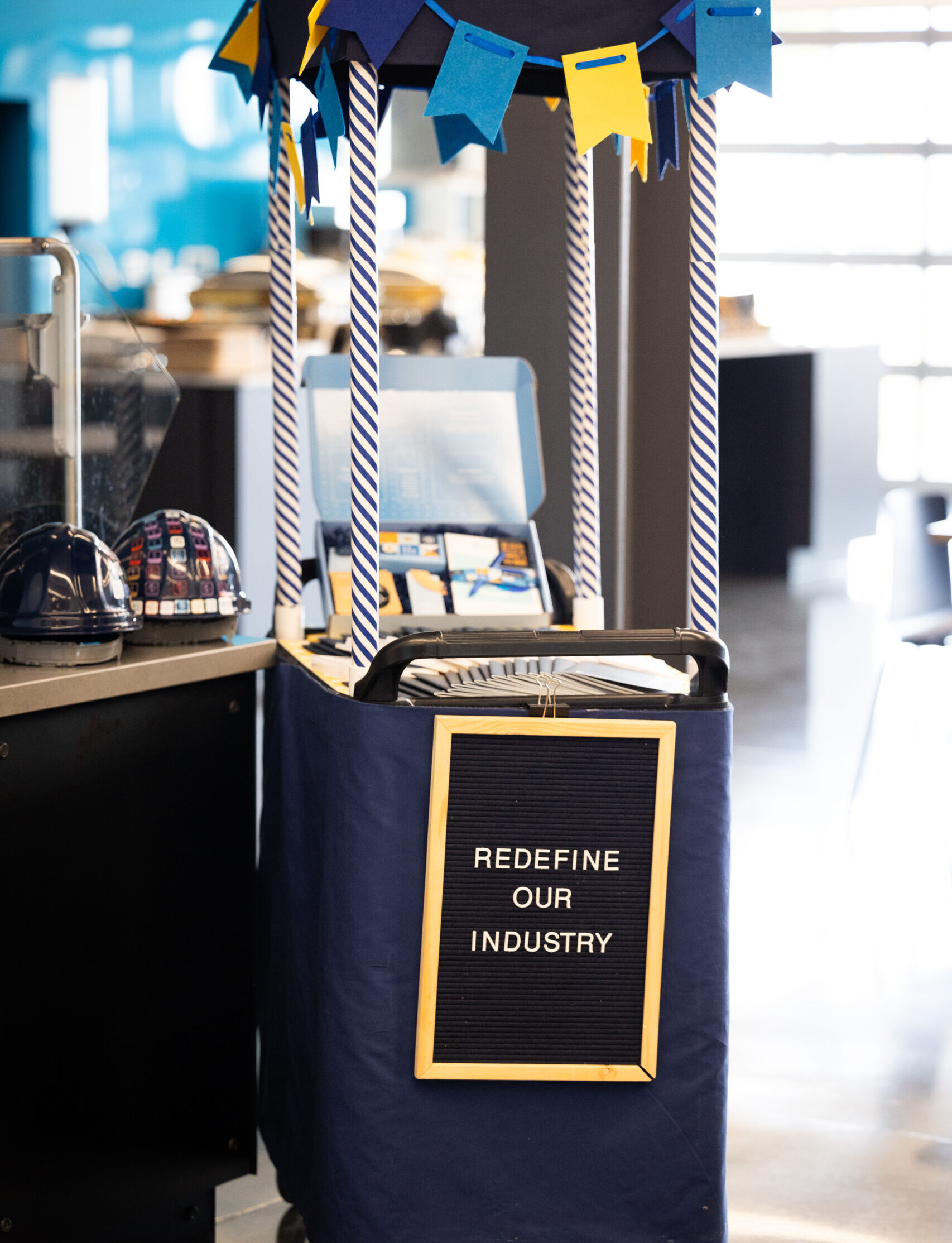Looking for Work/Life Harmony
Most company leaders can attest to the fact that finding a way to be a present spouse, parent, and even friend while building a business can be extremely challenging. But it is critical for creating a life and lifestyle that are good and sustainable. People often talk about “balance,” but sometimes balance is simply not possible. So seek harmony instead.
In this Tugboat Institute® talk, Paul Mears III, President and CEO of Hello! Destination Management, shares his own journey as a CEO, a husband, and a father. Through the different chapters of his life, he tackled this tension with different strategies, and he uncovered some great wisdom along the way. Although he is unfortunately not able to resolve this tension for you, he does offer some strategies and perspectives that might help you as you find your own way through.
Watch and be inspired to seek work/life harmony in the way that works best for you and your family.
Turning Values into Action
Great Lakes Dental Technologies has been a fixture in the orthodontic and dental lab industry for decades, since long before I joined as President & CEO in 2022. And, I’d venture to say, it has been Evergreen® since its founding in 1967. Our co-founders’ commitment to our industry and their staff led them to sell the company to the employees, creating a 100% Employee Stock Ownership Plan (ESOP) in 1990. Great Lakes is an industry leader, and a wonderful community in itself; for all these reasons, when the opportunity to join the team was presented to me, I jumped at the chance. It matched my desire to transition away from companies that were building to sell. Some of them were great companies, but something was missing for me without the long-term, Evergreen mindset. However, just because a company is already Evergreen doesn’t mean it’s perfect, or right where it needs to be.
Great Lakes has a simple vision statement: “Delight our customers. Respect and help our co-workers.” I love the simplicity of that, and I never want to change it. It’s so straightforward and effective. The great company culture and long-term decision-making created strong employee loyalty, with some employees staying over 46 years. However, despite being deeply grounded in strong values, the company has seen the development of some poor habits over time. While longevity and culture are strengths, they can also lead to complacency if not paired with ongoing discipline and intentional efforts to continually align values with specific, teachable behaviors.
Coming in as an outside CEO, one advantage I brought with me was the ability to see things with fresh eyes. I could see things that the long tenured team could not. I saw this as an opportunity – find a way to get back to best practices and increase the power and impact of the values and vision that were already ingrained in the company and the people. But I wanted to be careful to do it in a way that didn’t alienate or disempower the amazing team that had been at the company for so long.
To tackle this work, I enlisted the help of an organization called CultureWise. They provided a helpful framework and process for achieving our goal: match our great values with specific behaviors that will allow us to easily and clearly take the values off the walls and put them into action. CultureWise taught us that ritualizing and ingraining a finite number of behaviors in your team is what really reinforces the transfer of the value to a behavior. That made a lot of sense to me, because the values were already in place.
We started by creating a group to work on this that consisted of team members from a variety of departments, in a variety of roles, and with a variety of tenures at Great Lakes. The first exercise we walked through was to have everyone reflect and share the ‘Great, Great Lakers’ who most exemplified the best of our company and its values. Once we had the brainstormed list on the whiteboard, we started talking through why each person had nominated their choices. It got powerfully emotional, actually, with one long-time employee talking about a new HR Director and how profoundly she had changed his life in the laboratory. It was extremely meaningful, and it was completely sincere.
Our next task was to connect these great stories to qualities and values. This took some work, and in the first few versions, some sounded too journalistic, while others sounded too “gotcha.” For each value, we then connected them to a behavior; what would it look like to act on that value? We ultimately identified 27 fundamental behaviors that encapsulated the company’s values. It was so great because at the end of the exercise, I looked at the list and realized that these were the values that had existed since 1967. All we had done was document them.
27 behaviors may seem like a lot, but we wanted to get granular and to be extremely clear in articulating what it looked like, for example, to “embrace all perspectives” or “invest in yourself.” We didn’t want to run the risk of any of it being too abstract and therefore ineffective.
The list is not ranked, but at the heart of the 27 fundamentals are three core behaviors that are essential to Great Lakes’ success: Think and Act Like an Owner, Never Compromise on Quality, and Do What’s Best for the Customer.
Think and Act Like an Owner: This behavior is about instilling a sense of ownership in every employee. We are an ESOP company, we own our building, and we own our land. We have no debt. When we recruit somebody, we make it clear that this is our place. If there’s a snowstorm, we come dig out. This is ours.
This sense of ownership extends beyond physical property to include our reputation and relationships with customers. Employees are encouraged to take initiative and make decisions with an owner’s mentality, reinforcing a culture of accountability and pride.
Never Compromise on Quality: As a medical device company, Great Lakes serves a highly demanding clientele—doctors who expect nothing less than perfection. We like to say that we treat the customer like we would our own child in the chair. This commitment to quality is non-negotiable, and employee-owners understand that their work directly impacts the well-being of patients.
Do What’s Best for the Customer: This behavior encapsulates the company’s customer-first mentality. We refer people to our competitor if they’re better at something than us because we expect to work with these doctors 25 years from now. Our long-term perspective ensures that employees always prioritize the customer’s needs, even if it means foregoing short-term gains.
27 behaviors are far too many to memorize, so you may be wondering how a list of this length can be effective. To ensure that these behaviors are not just words on a wall, we have ritualized them into the daily routines of its employees. After we implemented our fundamental values, for 27 weeks, I wrote a piece every Monday morning, each focused on one of them and shared it with the full team. These pieces were often deeply personal, and each aimed at illustrating the importance of each behavior. Once I had made my way through all 27, the leadership team took over, and now one of them highlights one fundamental behavior each week.
The fundamentals are also incorporated into meetings and performance reviews. I don’t start every meeting with a behavior, but I often do. I also start every board meeting with a story illustrating a behavior. When we have monthly all-company meetings, I get a volunteer to talk about that week’s fundamental behavior.
These rituals serve as constant reminders of what Great Lakes stands for and how employees are expected to behave. They also provide a common language for employees to give and receive feedback, making it easier to address issues and celebrate successes.
One of the most powerful outcomes of this approach has been the empowerment of employees, especially those in leadership positions. We recently promoted seven technicians to supervisory roles. They are now managing their former peers, which can be a challenging transition. However, the fundamentals provided a language and a framework for giving constructive feedback and coaching. They can say, for example, “Hey, how are you being relentless on improvement? Maybe you can be a little more exacting.” This approach has also helped create a more open and honest culture, where employees feel comfortable discussing difficult topics. “Speak courageously” has moved us forward on this front a great deal.
I’m happy to report that this initiative has moved the needle and has brought the values, which were already excellent, back to life in the day to day of each employee-owner at Great Lakes. The sense of ownership is at the heart of what makes this all so effective and powerful. It extends to every aspect of the business, from the quality of the products to the relationships with customers. It’s a model that has stood the test of time and, especially now that we have moved through this exercise, will continue to drive Great Lakes’ success long into the future.
Be the Buffalo: Why an Optics Company Opened a Preschool
It always surprises me how often an opportunity presents itself as a problem.
In 2018, Vortex moved to a new location with adjacent space we owned and that was built to be a preschool. We were merely the landlord and leased the space to a new tenant. However, it quickly became clear that the school had issues. Feedback from employees and the public highlighted significant operational challenges, and because the school was connected to Vortex, we knew we had to make a change.
Initially, we thought the best option was simply not to renew the lease. But upon reflection, we realized that having a preschool on site had real advantages. Our team trends young, and many have children. We realized it would be wonderful for them, and therefore for us as a business, to offer childcare services on site. Of course, we had zero expertise in running a preschool, so we knew there would be problems. The path forward wasn’t clear, but we committed ourselves to finding a way.
Today, the Little Buffalos Preschool is thriving. By providing subsidized, high-quality childcare, we’re saving parents on our team both money and time, while making it easy to keep the most important people in their lives close by.
Here’s how that preschool got its name, and in the bigger picture, the story of how Vortex does business today.
ONWARD, INTO THE STORM
Like many of you, I’m constantly searching for stories that challenge and inspire me as a leader. When I read Rory Vaden’s book Take the Stairs, I was struck by the metaphor of the buffalo.
In short, when storms approach herds of cows, the cows will turn away, moving with the storm to lessen the suffering they face in the moment. Buffalo, on the other hand, charge directly into the storm, facing it head on. In the short term, they face more intense pain than the cows. But in the long run, they get through the storm quicker and suffer less. This metaphor of facing challenges resonated deeply with me. When we undertook to rework our core values a few years ago, we decided that ‘Be the Buffalo’ captured the spirit we were trying to articulate the best; we adopted it as one of our Core Values.
In practice and at the most fundamental level, one of the most crucial applications of ‘Being the Buffalo’ is having difficult conversations. Engaging in difficult conversations is uncomfortable, but it is essential for growth and improvement. Most people, including myself, can be cows, avoiding problems and challenges. But effective leadership means facing these situations head-on.
With the development of Little Buffalos Preschool, we saw a problem and had to address it directly. That involved ending one preschool to start another, a long conversation that was far from easy. Further, as an optics company, we’d never done anything like opening a preschool. We had to learn new skills, hire the right people, and build the right facility. But together, our team not only faced the problem; we turned it into an opportunity. We chose to be the buffalo, so we gave the preschool that name.
THE BUFFALO IN OUR DNA
As a CEO, I benefit from the guidance of great leaders, including my father. In fact, under his guidance, I’ve realized that Vortex has been thinking like a buffalo for years.
Take our VIP Warranty, which promises to repair or replace any Vortex product free of charge. When we introduced this policy years ago, we didn’t yet have the data to back its financial viability; it was a huge risk.
We went ahead because we were a young, small company up against giant competitors who had a lot of advantages we simply did not, including far more experience in the field. The one thing we had was the ability to choose to do the right thing for our customers. Without knowing it, we decided to be the buffalo, and prepared ourselves for whatever challenges we might face to make our dream work.
If we dismantled the VIP Warranty now, our profitability would go up in the short term. But what we’d lose in terms of culture and customer loyalty would be significant, and those losses would start to show up in the long term. Like all businesses who are part of Tugboat Institute®, we’re not here for short-term gains. Even in 2024, the VIP Warranty is still one of the things our customers tell us they appreciate the most.
LITTLE BUFFALOS, BIG IMPACT
Every day, I have the pleasure of driving past Little Buffalos on my way to work. I get to watch my team dropping the most precious people in their lives at a preschool that is safe, caring, and completely dedicated to their happiness. In seeing the Little Buffalos’ name, I am reminded of the challenges we initially faced in getting the preschool up and running, which were painful in the short term. But, as with our VIP Warranty, the long-term benefits for the people we care about far outweigh the initial discomfort.
Today, Little Buffalos receives overwhelmingly positive feedback from our team and the public, and it’s now the top perk for our employees. We’re proud to say that at least in this one small way, our Little Buffalos are being cared for and nurtured in a place that encourages them to face the challenges in their lives head on, turning problems into the opportunities that will shape their futures.
The Making of a 100-Year Company: My Journey to Employee Ownership
Brad Herrmann learned about building and running a business from his father, who had done just that. But then his father sold the company, and the company and the team Brad had grown to love disappeared. He partnered with a friend and founded a new company, and they vowed that would not happen to them.
In this Tugboat Institute® talk, Brad shares his journey to find a way to ensure that his company, Text-em-All, lasts far beyond his own tenure. The company has grown substantially since its founding in 2005, and Brad and his co-founder were committed to finding a way to ensure it stayed Private and Evergreen® forever. He examined a number of potential ownership models and finally hit on the Employee Owned Trust (EOT). They have just completed their conversion to an EOT and Brad is a big fan.
Watch and learn more about EOT, and whether or not it might be right for your company.
Prioritize Character in Your Hiring Process and Protect Your Culture
Running a business in Alaska’s travel industry is a unique challenge. Here at Alaska Riverways we operate tours on traditional sternwheeler riverboats and offer guests an experience that allows them to discover the rich history of travel, trade, and discovery in Fairbanks and the surrounding area. It’s a highly seasonal business; we flex from 15-20 full time employees year-round up to over 200 for the summer season. Operating boats in Alaska and Canada has been my family’s way of life for over 125 years and five generations and that experience and history have shaped Alaska Riverway’s identity since 1950. Despite the specificity of our operation, we still face many of the same challenges that most businesses do. Maintaining culture is one that, as an Evergreen® business, is of the utmost importance, but also one that can be particularly challenging with the ebb and flow of a seasonal workforce.
In the years before 2020, when I was a member of the executive team and then company president starting in 2019, we began addressing the question of culture. Since we bring in so many new employees year after year, we must pay extra attention to this. We have been lucky in that, over time, we have had a very high return rate for our summer employees – 60%-70% – and our culture was strong and positive. But we noticed that every year, despite our careful hiring process, we nevertheless had a certain number of employees who ended up not being a match. Most of them didn’t make it through a full season. Although the number wasn’t high, we wondered if we could do better.
The positions we hire for in the summer include entry level hospitality jobs like retail associates, reservationists, tour guides, food servers, dishwashers, kitchen assistants, and deckhands. Our workforce tended to be quite young; most averaged in age between 18-23 and were college students or college-aged students. Because we are so grounded in the culture of Alaska (and because housing is so challenging in the Fairbanks area) we sought to hire primarily from our own community, or at least from Alaska. Historically, our interviews were fairly standard, and we looked at things like work and life experience and education as a big part of our evaluation of each candidate.
When we decided to review our hiring process, we started at the beginning and asked ourselves, what makes a good Alaska Riverways employee? Conversely, what kind of employee doesn’t fit us? It became clear that it mostly came down to culture; people who were friendly, authentic, and engaging were a great match, and those who weren’t, were not. As a result, we decided that we would re-work the interview process to focus exclusively on character, rather than experience. In answer to the question, what makes a good Alaska Riverways employee, we narrowed it down to four traits: nice, outgoing, optimistic, and enthusiastic.
Our new hiring plan was different, but it was fun! We created a long list of questions that got at those four characteristics – questions that would allow us to understand who the candidates were as people and how they saw the world. We asked, for example, “How would you explain the color yellow to someone who is blind?” This was aimed at gauging the empathy of a candidate and finding out if they were nice. We asked, “Say you have a wonderful time at a party. Is this because everyone was friendly or because you were friendly?” This is intended to gauge how outgoing a candidate is and to what extent they take responsibility for their own happiness. A lot of the questions may sound silly, but they helped us measure each candidate against the four traits we had identified as core to our culture. We even did some group interviews for the second round where multiple candidates came in together and collaborated on a task to see how well they worked together in a group.
Finally, we instituted an improved post-season analysis, to see how well we had done in hiring the right people for the jobs. And if an employee scored high initially, but didn’t perform as expected on the job, could we learn something from that experience? After a couple years of iteration and calibration, we were starting to notice that fewer people were leaving, and it seemed to be working. Then covid hit.
During the first year of covid, we shut down completely. We had to withdraw our offers to the people we had hired for the summer, and had to furlough most of our full-time staff. We kept just a few people to keep the lights on and we hunkered down. The following year, we were only able to open on an extremely limited basis, so we hired very few people in comparison with our usual surge. Finally, moving into the 2022 season, we were ready to scale back up again, and we realized we had a big problem; we had lost all of our culture keepers – all of the people who tended to return for two, three, or even five seasons. We had to start over, rebuilding our pipeline and with it, our culture.
An additional challenge we faced, which I expect many others have been facing for a few years now, is the shift in the talent pool. Demographics are such that the pool of qualified candidates for just about any role in any company in any industry is shrinking, often drastically. This means that the college kids suddenly have better paying and more professionally oriented opportunities. As a result, the candidates we had previously seen entering our pipeline weren’t applying for our jobs anymore. We solved this problem by hiring younger employees; now the majority of our summer staff are 14 to 17 year old high school students. Even without the work we had done pre-covid to reorient the hiring process toward character, it would no longer have made any sense to look at experience at all. These kids are often walking into their very first job! So, we leaned heavily into our revamped hiring process and continued to focus exclusively on character.
In so many ways, we are fortunate that we undertook this shift before we found ourselves with a problem to solve. It’s not perfect; recruiting and hiring this way is more time consuming than the way we used to do it. It would be easier to hire the first people who show up, especially given the number of jobs we look to fill each season, but it’s clear to us that it’s worth it to do it the hard way. And it seems to be working; we are starting to see our return rate move back up. We are at 55% from last year for this year, which is a huge improvement!
A real advantage we have in this work is that despite recent challenges, we have a strong history of generations of happy employees we can lean on. Working for Alaska Riverways for the summer is quite a memorable experience. We have alumni groups that stay in touch and get together for reunions. Our network is so strong that we are now seeing children of former employees applying to work with us.
However, just because something is good, doesn’t mean it can't be better. And it doesn’t mean it shouldn’t be protected, because time can erode just about anything if you don’t pay attention. For decades, we didn’t talk about culture much or work on it overtly because we were so nose to the ground just running the business and getting it all off the ground for each new season. We can’t grow and continuously improve if we don’t pay attention to such an important aspect of our business. It’s one of the things I have learned as a member of Tugboat Institute® – the power of learning from others. I’ve come to see that while it is harder to do it this way, it’s critical, especially if you are an Evergreen company for whom company culture is the bedrock of your People First environment.
How is this relevant to non-seasonal companies? Well, you could say it’s an extreme example of managing fast growth in any company. It’s more compressed and the candidates are from a specific group, but the bottom-line concerns are the same – how to identify the right people and increase your chances of success in maintaining culture, so you can stay strong, retain your people, and attract the best team members for the long term. In lots of businesses, skill and experience matter more than they do for us, but it is also true that not every candidate who is qualified from a skills perspective is a good fit for the company. Ultimately, the best strategy is to make sure your company is an absolutely great place to work. To be Evergreen. To make sure your employees are happy, so they return or stay, depending on your structure.
Managing Success: The Art of Persevering Through Upturns
Perseverance is one of the Evergreen 7Ps® principles and it’s critical for any Evergreen® company’s survival. Contrary to what many assume, however, it doesn’t just come into play when times get tough. In my time as President & CEO of MCG Explore Design, an Architecture and Interior Design firm based in Alaska, my team and I have gained insights into the importance of persevering through both downturns and upturns. MCG has weathered storms and soared to new heights in the more than 30 years I’ve been with the firm. Through the vagaries of the past few decades, there have been several pivotal moments that have driven home this important truth.
I joined MCG straight out of graduate school. I started drafting and moved into my current role 25 years ago. Like any company that intends to endure for the long term, at MCG, we expected that the road to success would not be a straight line, and right from the start, put some strategies in place to enable us to get through the downturns that were sure to come. Early on, for example, we adopted a ‘distributed leadership model’, in order to foster equal opportunity through independent agency, accountability, and shared success among the leadership team. This approach not only empowers individuals but also fosters super-collaboration and innovation, leading to exponential-paced growth for our company.
One specific outcome of this leadership structure has been reducing our vulnerability. Each of our seven leaders has complete freedom to pursue projects and clients on their own. The intended result has been to create a diversity of ‘lines of service,’ each on their own timeline and following their own cadence. As we move through any project, we “roll on” in the early stages and as we near completion, we “roll off.” The rolling off on the backside is where we are making the most profit, as bills come due and are paid and work closes out. This creates a sine wave of work, billings, and income with each 'line of service.’ By creating space for multiple lines of service, each driven by their own engine and following their own plan, we end up with multiple sine waves that move at a variety of frequencies; as we are rolling onto one project, we are rolling off another, and so on. Overlapping sine waves create a median between high and low waves that is a line that is nearly flat, indicating economic stability. This means the money is coming in more or less steadily and we avoid periods of drought where we could become vulnerable to unexpected costs or expenses.
This is just good hygiene; it is part of our plan to level ‘Booms’ and ‘Busts’ both locally and nationally. It helps us stay disciplined and gives us the courage to take risks when the right opportunities arise. It also reduces the feeling of having lots of ‘extra’ cash that might cause us to become careless if it all came in at once.
Another strategy we employ that helps us stay poised for opportunities and avoid unanticipated consequences is a deep look at long term management and success. Like any strong and successful company, our strategic planning includes looking out ten or even 15 years, and doing what we can to create lines of service that will start to prosper in that timeframe; this process of assessing the now and lensing into the future is essential for cultivating a generational company. We need to keep imagining what is coming next, knowing that what makes us competitive today will not suffice tomorrow. A current example of this is our initiative in construction management; we will open a construction management line of service later this year which will, over time, allow us to compete with the larger companies offering industry specific expertise with nuanced, clever stewardship. It will take time to grow it to maturity, but we see this as an area where demand will be high in the future, and we want to be ready to be super-collaborators when that time comes.
Our distributed-leadership model and our strategic planning are examples of safeguards against vulnerability in tough times, and they’ve been remarkably successful, to date. A final, important way we guard against complacency and vulnerability is our commitment to smart growth; it’s an essential tenet to success.
Both 2012 and 2017 were tough years for us. We didn’t have our lines of service where they needed to be, and we had to reduce overhead. I had to make some hard choices and let a few people go, including one person who had been with us for 20 years. It was awful. Eventually, we started to move back into better territory, won some great contracts, and were feeling like the rough patch was behind us. In the last four years, in fact, we have had our biggest years ever – one after the other.
This created pressure to ‘staff-up’; I started hearing, “We’re doing really well – maybe we should look at hiring a few people?” But our experience in 2012-2017 taught us that this is not good discipline. We learned that a nimble, light, and quick super-collaboration suits us best. We leverage each other to turn the corner and accelerate to success together. In response to the calls for renewed hiring, therefore, we had to tap the brakes on that and re-center the conversation. We spent some time thinking about the impact on our overhead. Were these new lines of service going to endure? If so, what did we need to do to support that? If we’re not sure yet, we wait.
Over-hiring during upturns is one of the biggest mistakes we made in the past. In general, when it comes to growing the team, we choose instead to stay nimble, light, and quick. We use consultancy to add resources where we need them and to do the heavy lifts we can’t manage. This is not only a strategy for avoiding layoffs in downturns; this also keeps us, the core of the company, involved in important areas like client relationships, business development, and strategic thinking.
More is not always better. Maintaining this discipline during upturns can be challenging, because when you are feeling flush, there always seem to be easier, faster ways to resolve tensions. Perseverance here is critical; if done right, it will help lessen the need for extreme perseverance during the next downturn!
The key lies in being cautious with success. It's about not resting on your laurels and leveraging opportunities wisely. Instead of succumbing to overconfidence during boom times, we aim for strategic, Paced Growth, we evaluate risks meticulously, and we stay prepared for unforeseen circumstances.
I’ll leave you with a metaphor I like to use that I believe is relevant. In my mind, everyone is either leaning in or leaning over, at all times. ‘Leaning in’ declares “I’m here to help you” but I have discovered that ‘Help’ and ‘Control’ are the same word – a shocking realization actually. When we are leaning in, we are not listening, collaborating, or really engaging with our interlocutor at all. Agency is lost because it is usurped by a leader’s efforts to ‘help.’ When we are ‘leaning over,’ on the other hand, we are looking in front of us to shine light on what needs to be done, all while preserving the agency of our interlocutor, who retains full rein of the outcome. Both people involved in the interaction have their eyes wide open, focused on the task at hand and on what lies ahead. Leaning over is like Inception.
Our energy is trained forward, and we are ready for anything. As a business leader, no matter how flush you feel or how impressive your success, the moment you start leaning in more than leaning over, you lose the perspective of agency and trust. This can be the first step toward the precipice where you are no longer ready for what lies ahead. Lean over at all times, and you will be ready to persevere through whatever lies ahead be it challenges or opportunities. We are all creatives and need to embrace ‘Our Design’.
Transitions Either Happen to You…or Because of You
Change is uncomfortable, especially when we did not seek it and when it sets us on paths we would never have chosen. How we choose to deal with the inevitable surprises life has in store for us is where we really find out who we are and what we are capable of. This is true in our everyday lives, as well as in our jobs and careers.
In this talk, Tugboat Institute® member Elizabeth Glasbrenner shares her story of dealing with change. Elizabeth co-founded her company, Smiley Technologies, with her brother after their father sold his own company and they perceived a window of opportunity. Over the following years, as she started her family and worked on the business, she encountered several twists of fate she had not planned for at all, both at home and at work. As she faced the huge changes that presented themselves, she realized she had a choice: to let change happen to her… or to choose to embrace it and make it work for her.
Watch and be inspired by this extraordinary story to choose to be an agent of change, rather than a victim of it.
A 77 Year-Old Startup
Building a multi-generational business is hard and it is rare. About 13% of U.S. family-owned businesses are passed down successfully to a third generation, while just 3% survive to a fourth generation (Businessweek.com, 2010). Information on successful transitions of fourth-generation family businesses is rare, making it evident that sustaining success across multiple generations is a formidable challenge.
However, there are exceptions. I am President of Capitol City Produce, a fourth-generation family business that has thrived for over seven decades since its founding in 1947, just two years after the end of World War II. How have we managed to beat the odds? In short, through relationships and innovation, and through consistently embodying the spirit of a startup despite our decades-long legacy.
The first and most critical ingredient to our success over the years has been our unwavering commitment to nurturing relationships—with both customers and suppliers. As an Evergreen® business, we have a People First orientation, and this extends beyond our team to all the people in our universe. We exist to serve them, and we are driven by a profound focus on understanding and engaging with them as often as possible. Importantly, this is not just a strategy; when we approach a customer and ask how we can improve their experience, it has to be about them, and it has to be genuine. We interact with our suppliers and customers all the time, traveling around to visit them in person to be sure we have a solid understanding of their experience, their pain points, and what we can do to improve our service to them.
Here is a concrete example of what this looks like. In Louisiana, in early Spring we boil a lot of seafood. It’s a big family and social thing here. It’s also a big deal for our retail supermarket customers to provide all the seasonings for boiling season. We created a new product for boiling season; we took all the produce seasonings that go into a boil, the garlic, onions, lemons, potatoes, etc., and we put it all in one bag and marketed it as a “boiling bag”. Some members of our team were talking to a supermarket customer who loved the idea, but remarked, “I love it, but I don’t know how I am going to display it to my customers.” Our team listened. In Louisiana they have these traditional Cajun boats called pirogues. We found a custom pirogue builder and engaged him to build a miniature, custom pirogue. We presented it to our customer and said it would be great for displaying the boiling bags to his customers. He was stunned. Like many of our customers, he was waiting for the part where we said what we wanted out of the interaction, but it never came. We just did it for him. His comment was simply “Wow, I can’t believe y’all did that”. This is what valuing relationships looks like to us.
With a diverse customer base spanning food service and retail supermarkets, comprising over 3,000 customers, listening and tending to our customers’ needs and wants is a big project, and it is driven by a singular strategy: envisioning the future through their eyes. We want to align with our customers as we build toward the future. What do they value most? What will they need from us? This is where our attention to relationships joins together with our attention to innovation.
In thinking about how to best serve our customers’ ever-evolving needs, we felt that we could adapt in tandem with them, in a harmonized way, if we truly were to understand their perspectives about the future of their business and their future challenges. We wanted information that was unique, deep, proprietary, and attained through trust that would foster a unique candor. To expand the population of perspectives, we reached out to a respected industry peer serving additional markets in Houston, Dallas, and Austin. We collaborated to create a “Customer Insights” dialog questionnaire that was used by both companies to hold discussions with each of our top customers. The “Why” was explained to customers like this; we want to better understand how exceptional supply partners should evolve over the upcoming three-year horizon. We explained that we wanted to understand their specific perspective, so that we could plan to evolve our business with keener insights.
Once we had collected insights from forward-thinking key customers across six major markets, the leadership from Sales, Operations, Finance, and the Executive leadership of both companies met in person to distill the key insights from each customer. The insights were validated through the multi-company and multi-markets approach. This initiative strengthened customer relationships, engaged key sales leadership in learning, developed foresight, changed viewpoints, and influenced the service culture of both companies. A specific insight that stuck was this; “You are an exceptional supply partner because you show that you care more than you should! I feel like when I am talking with your team, they are wearing my company’s shirt.” Three years later, the key insights are still on my office whiteboard.
Another pivotal moment came during a conversation with a leading sports bar and restaurant customer expanding nationally. We had great ideas for new technologies and were considering how we might deliver these technologies to them. We explained what we were thinking, and they replied, “Our future employees are going to want to have everything they need right on their phone. Don’t develop something new and proprietary – just engage with them on their phones.” This insight revolutionized our approach. We shifted our focus to not only developing cutting-edge solutions but also delivering them in a manner that resonated with our customers. One example of a change in path was to text “Where’s My Truck” delivery commitments to our customers vs. requiring a mobile app to be opened (download, login, password, etc.) to get the information.
All of this work and attention has a very simple focus: taking care of people. Our customers and suppliers have a choice. We need to give them a reason to choose to do business with us. We have a saying at CCP – the Wow Zone. It’s from a visual we use to onboard new team members titled “The Depth of Effort for Long-Term Customer Retention.” A certain percentage of our efforts should be expended in creating Wow Zone customer experiences where they are pleasantly surprised by an innovation, an idea, or a solution. That’s where a customer engages with us and the levels of attention and service they receive cause them to say, “Wow. You’ve got to be kidding. You’re willing to do that for me?”
Ultimately, I think a possible reason many multi-generational businesses fail is closely tied to the reason we are able to continue to operate like a start-up, even after 77 years. Companies that manage to be successful for more than one generation can be tempted to slide into ‘complacency mode,' where they sit back to enjoy the success they have achieved. That can be the first step toward the end.
By directing our focus not just on our business today but on what our business will look like in the coming years, we stay on our toes, we stay agile, and we stay energized. Our Evergreen grounding in relationships and focus on Pragmatic Innovation give us the tools to connect the past to the future, and to make our energy actionable. Through a combination of technological innovation and personalized service, we have not only retained existing customers but also expanded our market presence significantly. Furthermore, our ability to adapt and respond promptly to customer needs, as quickly as a one-minute response time for chats, has been a key differentiator. It distinguishes us from competitors and solidifies our reputation as a partner that is reliable, agile, and a quick adapter.
We know that the success of our business lies in the future, not the past, and not even the present. We have opted to continually embrace change, and thus, we stay young, we stay relevant, we remain curious, and we continue to believe we are a start-up.
The Secret Sauce: A Culture of Connection = A Thriving Organization
Tugboat Institute® member Kirk Aubry leads Savage, a transportation company based in Utah that moves and manages critical materials. In the years he has led the company, they have seen impressive growth. Rather than simply sit back and admire their success, Kirk asked himself, why? He spent dedicated time and effort exploring this question, and has reached a clear conclusion: connection.
In this Tugboat Institute talk, Kirk shares his belief that connection is, in his words, “The Secret Sauce” that has allowed for Savage’s success and growth. Connection amongst team members, with their customers, and with their community. This realization is, in many ways, a great confirmation of the Evergreen® model and mindset, because creating connection starts with communication, care, and a focus on People.
Watch and be inspired to examine and improve connection throughout your organization.
Redefining an Industry
Last week, our Tugboat Institute® members made the trip to Omaha, Nebraska, for Tugboat Institute @Supportworks to learn about this exemplary Evergreen® company, reconnect with value-aligned peers, and enjoy a taste of Omaha. Dave and Dan Thrasher, who are brothers, co-owners, and leaders of their second-generation family business, put together a remarkable program and experience for our group.
On Wednesday morning, Dan and Dave welcomed us all to their beautiful and impressive campus, where Supportworks, The Thrasher Group, Thrasher Partners, and their newest business, Hello Garage, are headquartered. We opened the first day with a fireside chat with Dan, Dave, and Tugboat Institute CEO Dave Whorton, during which they shared the story of their parents bootstrapping the business slowly, over three decades, before handing the reins to their sons. Dan and Dave dug in and grew it from a $4.5M business in 2004 to an over $400M revenue business this year. Although the business remained relatively small in the 29 years Greg and Nancy Thrasher ran it before their sons returned, that period was critical to its later growth and success. In those first three decades, Greg and Nancy moved their business to Omaha to serve a larger market, added foundation repair to their original basement waterproofing business, and learned how to be a dealer of another manufacturer’s products and later that same manufacturer’s distributor to other dealers. During this period, they built a local brand that was deeply trusted by their community based upon always doing the right thing by their customers and employees. From there, Dave and Dan shared how they founded Supportworks, scaled both it and the original Thrasher business, adopted M&A to respond to the entry of private equity into their space, and key lessons they learned in scaling the overall enterprise at over 20% annual compounded growth rate for the past two decades.
In the second talk of the morning, Dave Thrasher dove into the evolution of their business strategy, breaking it down decade by decade and highlighting critical milestones and decision points along the way. Amanda Harrington, President of Supportworks, took the stage next to share the story of the companies’ journey toward codifying, articulating, and integrating their Purpose, Redefine Our Industry, across the entire organization and in all strategy, planning, and business processes. Finally, Dave returned to the stage to end the day of talks with a deep dive into the catalysts for growth through acquisitions with their Evergreen M&A playbook.
Before we left the campus for the day, we were treated to a tour of their impressive shared headquarters with both Supportworks and Thrasher Group employees as our guides along the way. We could see the incredible attention paid to every detail, from the design of the office space to the layout of their warehouses. It was clear from the way their employees talked about their work that they are deeply dedicated to their Purpose, take pride in their work, company, and team, and enjoy and support each other.
On day two, Dan and Dave collaborated on a presentation about their recent experience launching a new vertical, Hello Garage. They were candid in sharing not only how they selected this vertical for expansion and their successes with this venture, but also the mistakes made along the way and the lessons learned. Next, Amanda Harrington returned to the stage to share how People First comes to life at all the Thrasher companies and shared the details of their essential people programs and processes. She offered numerous specific, actionable ideas that attendees could take away, tweak, and implement in their own businesses. The last formal presentation of the day was from Dan, who shared what it means to them to create and sustain a remarkable customer experience. He cautioned that CEOs should not delegate responsibility for making sure that it remains remarkable and that it’s a never-ending process of continuous improvement for the team. Anything less than fierce attention to this aspect of the business, Dan warns, creates significant risk to longevity.
Finally, as is our custom at our Tugboat Institute Exemplar visits, we finished the day with a Q&A with both Dan and Dave, moderated by Dave Whorton. The candor and transparency that had characterized the entire experience extended through this conversation, during which Dan and Dave addressed questions pertaining to their operations, as well as ownership succession, governance, family harmony, their working relationship, and the future of the company.
After each of our busy days, we gathered for celebration in some of Omaha’s most iconic spots, including, of course, a steakhouse on one night and the historic and breathtaking Durham Museum on another. Dan and Dave proudly shared their beautiful city with us, and our community reveled in the support, friendship, trust, shared values, and love that exemplify this extraordinary group of Evergreen leaders. Thank you, Dan and Dave, for a wonderful and powerful week of connection, inspiration, learning, and growth.
